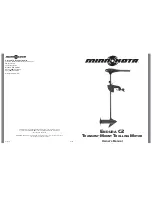
EVK-M91 - User guide
By default, the optional I2C pull-up resistors are not populated on the EVK board. The u-blox M9
GNSS receiver already contains internal pull-up resistors for normal use. If fast communication
speed with long cable length is needed, the optional pull-up resistors can be placed to the reserved
location on the EVK board.
4.2 GNSS input signal
To evaluate the GNSS reception, the GNSS signal must be supplied to the antenna input SMA
connector of the evaluation board. EVK-M91 evaluation kit includes a GPS / Galileo / GLONASS /
BeiDou antenna with a 3.0 m cable. It is possible to connect various active and passive GNSS
antennas with SMA connectors or provide a signal from a recorded or simulated GNSS RF source
to the antenna input.
Refer to the NEO-M9N System Integration Manual [
] for more GNSS antenna / signal
related information and recommendation.
The characterization and certifications for EVK-M91 are applicable only with the active
GNSS antenna included in the evaluation kit (or comparable).
4.2.1 Antenna connector
An SMA female connector is available on the front side (see
) of the evaluation unit for
connecting an active or a passive antenna. The RF path on EVK-M91 contains an LNA and a SAW
filter having 3.0 V DC voltage in the RF input. The recommended maximum antenna supply current
for active antennas is 40 mA and is limited by the internal antenna short circuit detection feature.
Please refer to [
] for more details. In addition to internal short circuit antenna detection feature,
a hardware short circuit protection limits the maximum current to 100 mA. This pin is also ESD
protected.
4.3 Time pulse
u-blox receivers include a time pulse function providing clock pulses with a configurable pulse period,
pulse length and polarity (rising or falling edge). Check the NEO-M9N Data sheet [
] for detailed
specifications of configurable values.
The time pulse signal is available at the 14-pin and RS232 connectors. In addition, time pulse signal
is connected to the LED on the front panel of the unit.
4.4 Reset button
The RST button on the front panel resets the unit.
4.5 Safe boot button
This is used to set the unit in safe boot mode. In this mode the receiver executes only the minimal
functionality, such as updating new firmware into the SPI flash via UART. In order to set the receiver
in safe boot mode please follow these steps:
1.
Press the BOOT button and hold it down
2.
Press the RST button
3.
Release the RST button
4.
Release the BOOT button
5.
If the UART interface has to be used, a training sequence has to be sent to the receiver
though u-center firmware update tool or custom message window. The training sequence is
UBX-19056858 - R02
4 Device description
Page 11 of 24









































